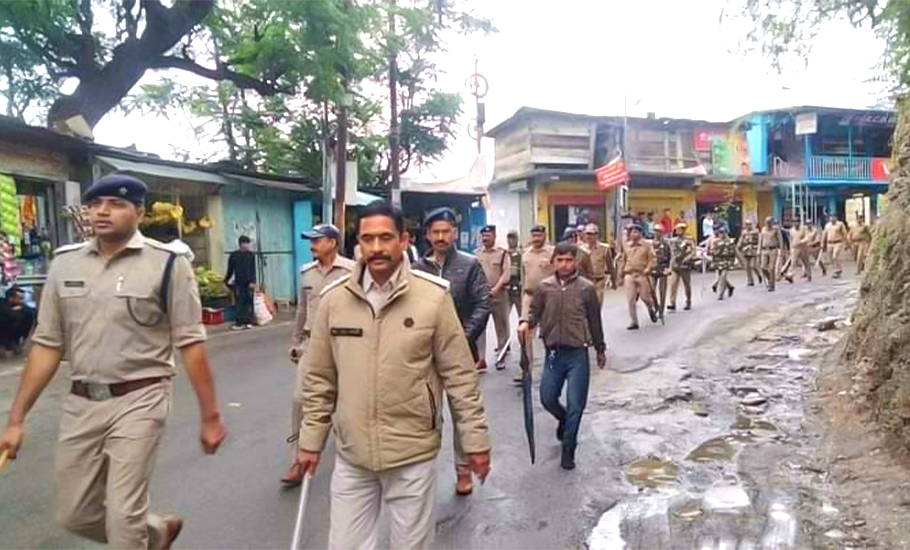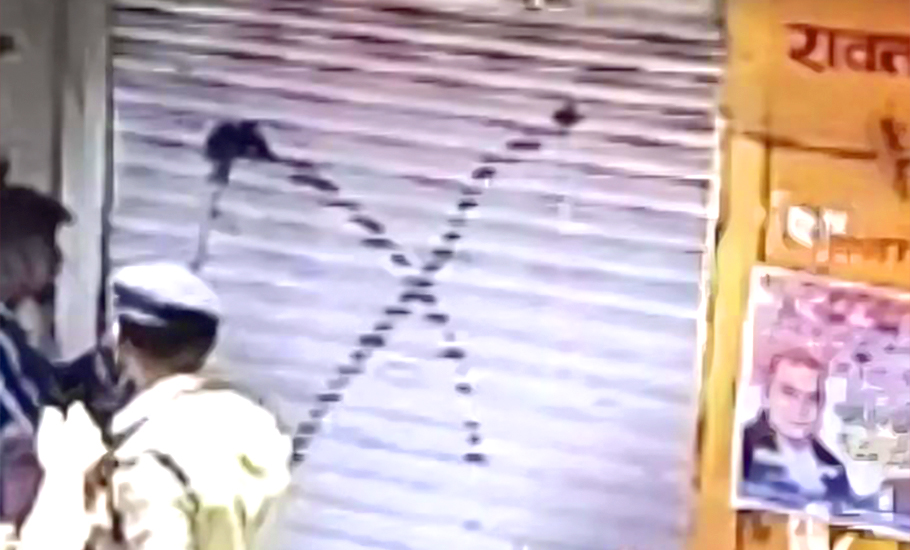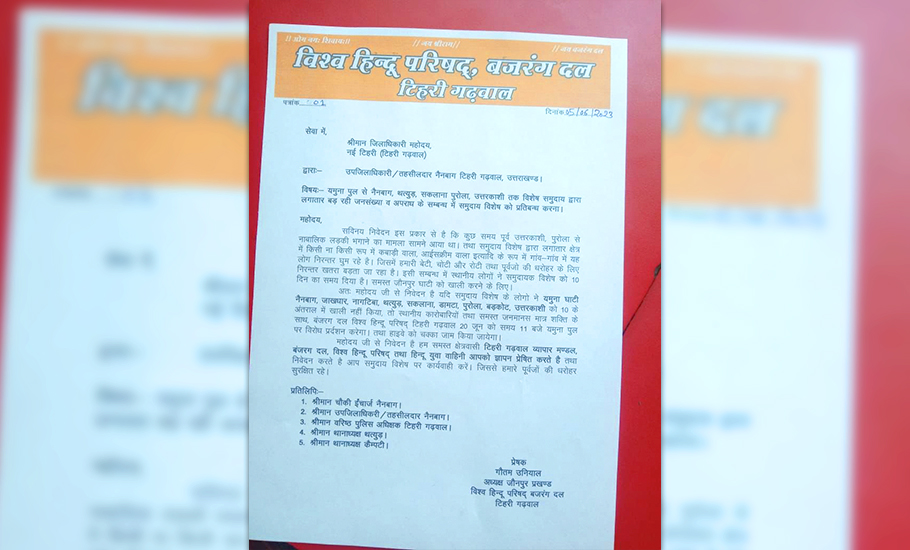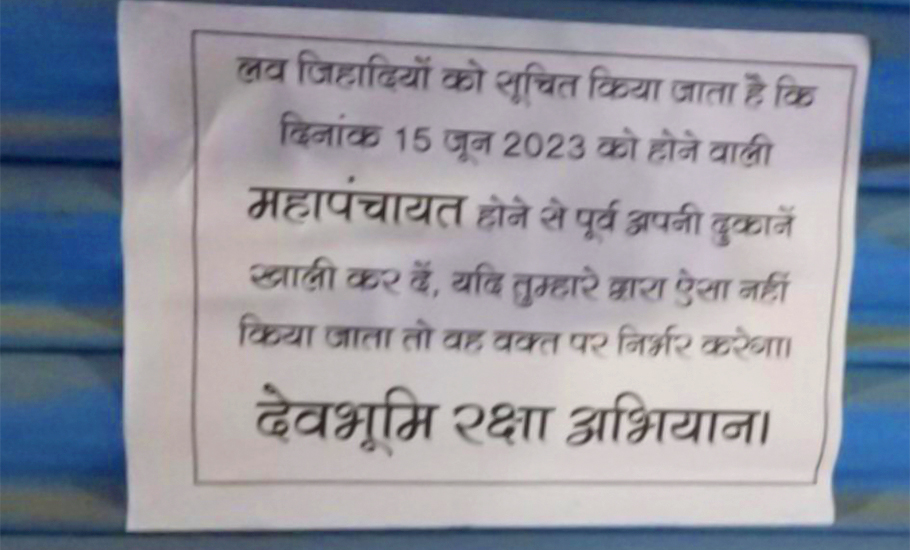
- Home
- India
- World
- Premium
- THE FEDERAL SPECIAL
- Analysis
- States
- Perspective
- Videos
- Sports
- Education
- Entertainment
- Elections
- Features
- Health
- Business
- Series
- In memoriam: Sheikh Mujibur Rahman
- Bishnoi's Men
- NEET TANGLE
- Economy Series
- Earth Day
- Kashmir’s Frozen Turbulence
- India@75
- The legend of Ramjanmabhoomi
- Liberalisation@30
- How to tame a dragon
- Celebrating biodiversity
- Farm Matters
- 50 days of solitude
- Bringing Migrants Home
- Budget 2020
- Jharkhand Votes
- The Federal Investigates
- The Federal Impact
- Vanishing Sand
- Gandhi @ 150
- Andhra Today
- Field report
- Operation Gulmarg
- Pandemic @1 Mn in India
- The Federal Year-End
- The Zero Year
- Science
- Brand studio
- Newsletter
- Elections 2024
- Events
- Home
- IndiaIndia
- World
- Analysis
- StatesStates
- PerspectivePerspective
- VideosVideos
- Sports
- Education
- Entertainment
- ElectionsElections
- Features
- Health
- BusinessBusiness
- Premium
- Loading...
Premium - Events

Genesis to exodus: How Uttarakhand, the Land of Gods, became a tinderbox of communal hate

Over the past fortnight, the endearing silence of Purola, a tehsil in Uttarakhand’s Uttarkashi district where avid trekkers bound for the stunning Har-Ki-Dun (Valley of God) stock up on supplies, has been replaced by a nervous laconism that portends bad tidings. The small town, with its population of fewer than 10,000 people, turned into a tinderbox of looming communal conflagration, on May...
Over the past fortnight, the endearing silence of Purola, a tehsil in Uttarakhand’s Uttarkashi district where avid trekkers bound for the stunning Har-Ki-Dun (Valley of God) stock up on supplies, has been replaced by a nervous laconism that portends bad tidings.
The small town, with its population of fewer than 10,000 people, turned into a tinderbox of looming communal conflagration, on May 26, when a 14-year-old Hindu girl was allegedly abducted by two men — Ubaid Khan (24) and Jitender Saini (23). The girl was rescued the following day by the local police and the accused, apprehended with the help of Purola residents, were arrested under stringent non-bailable sections of the POCSO Act.
Video: Police patrol streets of Purola in Uttarkashi district where Section 144 CrPC has been imposed by the district administration after the town witnessed communal tensions over an alleged attempt to abduct a minor girl last month.
The prompt arrests and the fact that one of the accused is a Hindu didn’t stop rabid Hindutva hotheads of the Vishwa Hindu Parishad, Bajrang Dal and the locally sprouted Devbhoomi Raksha Abhiyan (DRA) of self-styled godman, Swami Darshan Bharti, from raising the bogey of ‘love jihad’. Ever since, the peace and camaraderie that Purola natives knew all their lives has swiftly turned into a bygone memory; replaced by hate speeches targeting not just the 500-odd Muslim residents of Purola but also the thin population of the minority community that resides in Barkot, Nagtibba, Jakhar, Thatyur, Jaunpur and other villages and towns that fall within the expansive Yamuna-Tons Valley across Uttarkashi and Tehri Garhwal.
Also Read | Uttarakhand CM orders stern action in ‘love jihad’ cases after meeting with top cops
With the police showing no urgency in following the Supreme Court’s order to curb all manner of hate speech, members of the Hindutva outfits went on a rampage across Purola, on May 29, vandalising some shops run by Muslims. Next came the overnight marking of doors and shutters of homes and shops of Muslims in Purola and Barkot with ‘X’ marks, followed by posters directing Muslims to leave Uttarkashi and Tehri before June 15, when the Hindutva outfits planned to organise a Mahapanchayat in Purola to protest against alleged incidents of love jihad and land jihad by Muslims across Uttarakhand.

Nudged by 52 former bureaucrats, who wrote an open letter to the Uttarakhand DGP demanding immediate corrective measures, and other prominent civil society representatives who petitioned the Supreme Court and the Uttarakhand High Court seeking the same, the district administration finally woke up on June 14.
The petition moved before the Supreme Court cited flagrant violation of the court’s specific directives of October 2022 issued to Uttarakhand (along with Himachal Pradesh and Delhi) on curbing hate speech. Surprisingly though, the SC refused to entertain the plea and asked the petitioners to move the Uttarakhand High Court for relief. Before the plea could be listed for hearing at the high court, the local administration denied permission for the June 15 mahapanchayat. Various leaders of the DRA, VHP and Bajrang Dal were placed under preventive detention at their respective homes. Section 144 was imposed across Purola.
The VHP and Bajrang Dal have now called for a chakka jam and protest rally in Tehri on June 20 with the stated purpose of calling for all Muslims to be expelled from ‘Devbhoomi’ (Land of the Gods) Uttarakhand.
With chief minister Pushkar Singh Dhami’s government doing precious little to restore normalcy, the threatening calls that spread fast all across the hill state, which overwhelmingly voted for the BJP in the 2014 and 2019 Lok Sabha polls as well as in the 2017 and 2022 assembly polls, forced many Muslims to flee Purola and Barkot. The open letter by the 52 retired civil servants claimed that as on May 28, i.e. within two days of the alleged abduction incident, 42 Muslims had fled Purola.
“The DRA began threatening Muslims to leave the Jaunpur Valley immediately after the alleged kidnapping incident of May 26. The VHP and Bajrang Dal joined in soon after. On June 5, VHP, Bajrang Dal and Hindu Yuva Vahini wrote a joint letter to the Tehri Garhwal district administration saying Muslims in the Yamuna Valley, Purola, Damta, Nagtibba, Nainbagh, Thatyur, Barkot and some other towns have 10 days to leave Uttarkashi and Tehri Garhwal,” Avikal Thapliyal, the Dehradun-based editor of popular online portal Avikal Uttarakhand told The Federal.
Thapliyal added, “That these organisations could send such an ultimatum to the district magistrate and escape any preventive action signalled to the minority community that they will get no protection from the government. For the past week, Muslims have been fleeing by the dozens from these villages and towns but the local administration has made no effort to stop the exodus. The local police claim that no Muslim has left Purola or Barkot, which is a blatant lie.”
What stood out through this entire chain of events was the silence of the Dhami government. No appeals for maintaining peace and harmony in this so-called Devbhoomi were made by the CM or his ministers nor were any warnings issued to those who have been threatening the Muslims residing in the state.
Also Read | Illegal mazars in Uttarakhand to be demolished, says CM Dhami
This modus operandi of allowing targeting of Muslims in Uttarakhand till a breaking point is eerily similar to the tacit support that Hindutva outfits have increasingly received in recent years under BJP rule, be it from Narendra Modi’s central government or in states where the party enjoys power. Yet, the affliction of communal strife is relatively new for Uttarakhand, a state that was otherwise known (even when it was still part of UP until the year 2000) for conflicts between Hindu caste elites – the Brahmins and Rajputs, who collectively constitute a staggering 60 per cent of the state’s population – and the Dalits, who form 19 per cent of the total population.

Muslims comprise 13.95 per cent of Uttarakhand’s population but are largely concentrated in Haridwar, Dehradun, Udham Singh Nagar, Haldwani, Nainital and Almora. Most communal flare-ups of the past were largely restricted to Haridwar while upper reaches of the state, where Muslims are a miniscule minority – with population ranging from a few dozen to around a 1,000 people in towns and villages that otherwise have a Hindu population of 5,000 to 10,000 – remained free of religious polarisation and its typically violent aftermath.
“Even in the aftermath of the Babri Masjid demolition and during the Ram Janmbhoomi agitation, districts that comprise Uttarakhand today were largely untouched by the communal frenzy that had gripped the rest of UP and India. The communal tension we are witnessing today, mostly in districts of the Garhwal hills, is a recent phenomenon that began when Modi became the PM but it got a big push after the BJP also came to power in the state,” 71-year-old Nainital-based historian and social commentator Shekhar Pathak told The Federal.
Pathak, however, believes the ground work for turning Uttarakhand into another “Hindutva laboratory” had begun soon after the hill state was carved out of UP. “The biggest concentration of Muslims across Uttarakhand is in Haridwar, which alone accounts for close to five or six per cent of the state’s total Muslim population. When Uttarakhand was formed, there was no demand to merge Haridwar with it but the BJP government at the Centre decided to give Haridwar to the new state,” said Pathak.
He explained further, “Once the new state was formed with Haridwar as a district within it, the RSS and its affiliate organisations began covertly campaigning for a Muslim-free Uttarakhand because in their view this was Devbhoomi, the land of the Char Dhams of Hindus. The RSS-backed network of Saraswati Shishu Mandir schools came up all over the state where the Sangh’s communal agenda was passed off as education. Once the BJP came to power both in Delhi and Dehradun, Dharam Sansads, which until 2017-2018 were held behind closed doors, began being conducted publicly to incite violence against Muslims.”
Pathak feels what, perhaps, acted as another catalyst for rising communal strife was the unprecedented levels of unemployment across Uttarakhand in recent years. In September 2021, three months before the viciously communal Yati Narsinghanand and his rabble rousers gave open calls for violence against Muslims at the Haridwar Dharam Sansad, the Periodic Labour Force Survey, published by the National Statistical Office, had revealed that nearly 27 per cent of Uttarakhand youth aged between 15 and 29 years were unemployed while the overall worker population ratio (percentage of employed working-age residents) stood at a staggering 50 per cent. This meant that while one-third of the state’s youth was unemployed, half of the entire working-age population of the hill state too had no jobs.
“Directly and indirectly through its affiliates and sympathisers, the RSS-BJP combine had already been fanning rumours about love jihad and land jihad by Muslims in the state. When unemployment skyrocketed and the Congress started raising it as an electoral issue for the 2022 assembly elections, the Hindutva ecosystem began speaking about naukri jihad and vyapar jihad. Rumours were spread that Hindus of Devbhoomi were not just losing their daughters and ancestral lands to Muslims but their jobs and business avenues as well. Dhami, who had become CM months before the election and knew that the forthcoming elections were going to be tough began promising a Uniform Civil Code and stern action to curb love jihad and other imagined jihads if the BJP was voted back to power,” explains Jai Singh Bisht, Dehradun-based journalist and editor of online portal, Uttarakhand Himalaya.
Bisht said the BJP’s 2022 assembly poll campaign gave enough signals of how aggressively the party would push its anti-Muslim agenda if voted to power. “To compliment whatever Dhami was promising, the BJP’s election machinery spread rumours that the Congress would open a Muslim University in the state if it wins and this would further change Devbhoomi’s demographic profile. Harish Rawat, who was seen as the Congress’s CM face, was maligned as ‘Mulla Harish’ in a poster campaign. Unfortunately, the Congress did not counter any of these charges effectively. The BJP was voted back to power breaking Uttarakhand’s tradition of rotating BJP and Congress regimes every five years. Since then, these rumours have spiralled out of control,” Bisht added.
Thapliyal feels events that have unfolded in Purola also show an evolving pattern of spreading anti-Muslim hate in Uttarakhand. “Past incidents of communal violence were largely located in and around Haridwar, which has huge concentrations of Muslims in areas like Laskar, Piran Kaliyar, Manglaur and Roorkee. Unlike Haridwar, Purola has a very tiny population of Muslims and the same applies to Uttarkashi, Tehri Garhwal, Pauri Garhwal and other districts of the Garhwal and Kumaon hills. Recent instances where communal flare ups have happened are all in hilly areas, where Muslim population is very thin and where, unlike bigger cities of Haridwar, Dehradun, Haldwani and Nainital, it is easier to spread misinformation because people rely heavily on WhatsApp or word-of-mouth communication,” Thapliyal said.

Muslims in the higher reaches of Uttarakhand, where this pall of communal hate is now spreading, are economically backward, besides being hugely outnumbered by the Hindus. The community in areas like Tehri, Pauri, Karnprayag, Pithoragarh, Champawat, Lohaghat and Chamoli is either engaged in trades like bangle-making, weaving and carpentry or in low-paying jobs as mechanics, masons and barbers.
“Their economic condition makes them easy prey… some Muslims in these towns are engaged in professions that have been passed down generations but today these professions have become a curse for them,” said Pathak. He explained, “In Kumaon’s Lohaghat, there is a small population of Muslims that has traditionally been involved in bangle-making. The profession requires them to cater to girls from the Hindu community making these Muslims easy targets of the Hindutva brigade, which spread rumours about how bangle makers are harassing Hindu girls under the garb of doing their job. Similarly, in some parts, Muslims have traditionally been local musicians who perform at Hindu weddings and festivals; they too get targeted on false charges of harassing Hindu women, of theft or other petty crimes and then more serious rumours are churned around the incident to incite further violence.”
For the Modi government at the Centre and the Dhami regime in the state, these rising incidents of communal conflicts, some believe, also serve another crucial purpose – one that also explains why most Purola-like incidents have happened in the hills of Garhwal and not towards Kumaon. “The BJP uses communal polarisation to deflect attention from its failures. In Uttarakhand, particularly in Garhwal that has faced the maximum brunt of communal tensions in the past five years, there is enough that the BJP needs to hide and triggering anti-Muslim hate allows it to do just that. Garhwal has traditionally been a BJP stronghold and it also comprises the biggest chunk of seats (41) in the 70-member Uttarakhand assembly but none of the government’s promises for the region have been fulfilled yet,” claimed Nainital-based journalist Ravindra Devliyal, a former stringer with Hindustan Times.
Devliyal explained that things had gone from bad to worse for Garhwal ever since the BJP’s ‘double-engine sarkar’ was installed in Delhi and Dehradun. “Unemployment is at its highest, LPG cylinders have become unaffordable and the Agniveer scheme has hurt Garhwalis badly because this region is a major recruitment ground for the Army… the much-publicised Char Dham project connecting the four Hindu pilgrimage sites of Badrinath, Kedarnath, Gangotri and Yamunotri (all in Garhwal) has been an ecological disaster and a human tragedy because, on one hand, it has led to deadly landslides and the famous ‘sinking’ of Joshimath, while on the other, it has caused wide-scale displacement of people who either lived along this route or ran small dhabas and shops here before they lost their land to the project,” said Devliyal.
To divert attention from these issues, Devliyal said, the BJP has found it convenient to play the polarisation card. “The BJP’s hate factory now works overtime to stress that the Char Dhams must be cleansed of Muslims while simultaneously alleging that Hindus of Garhwal were losing everything to Muslims. This may be one reason why Garhwal sees more communal incidents compared to Kumaon. Also, both Modi and Yogi Adityanath, who originally hails from Pauri Garhwal, are extremely popular all across the Garhwal hills, and since they are the mascots of muscular Hindutva, the BJP finds it easier to push the communal agenda here using election-time statements by the two leaders which are meant to foment communal tensions,” Devliyal added.
